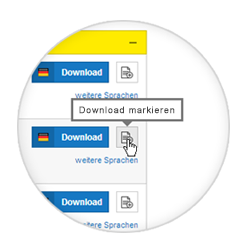Level measurement in mobile toilet facilities
Better route planning, greater efficiency and therefore lower costs: The self-sufficient VEGAPULS Air 23 radar level sensors ensure that the fresh water tanks of mobile latrines are topped up and the wastewater tanks are emptied in a timely manner.
They are an integral part of festivals, football matches, fairs and other major events, as well as almost every construction site: There are mobile latrines set up, wherever there are very few permanent toilets available, or none at all. A networked level measurement ensures cleaning and emptying at the optimum time due to continuous tank monitoring.
How does the measurement work?
The self-sufficient VEGAPULS Air 23 radar sensors do not require a process connection or cables. This makes them perfectly suited for deployment on mobile containers. They are ideal for measurement in IBCs and other types of plastic containers. This is because the sensors can reliably detect liquids and bulk solids by looking through a closed container top, . Thanks to their energy-efficient functionality, the sensors can be operated for ten years or more without having to be recharged.
What exactly do the radar sensors measure?
The VEGAPULS Air 23 sensors currently fulfil two tasks for one of the leading suppliers of mobile latrines and sanitary containers:- Continuous level measurement in fresh water tanks:
Many containerised toilets have a fresh water tank for washbasins and flushing. The sensors reliably determine the levels in those tanks. Strict hygiene requirements apply to drinking water, which is why non-contact 80-GHz radar technology is ideal for this application. Because the sensors measure right through the plastic top, the tanks do not need to be opened or modified to allow for installation.
- Continuous level measurement in wastewater tanks:
With no connection to a sewer, the mobile sanitary containers are fitted with wastewater tanks. VEGAPULS Air 23 monitors their levels regularly with precision. They are installed in the containers in a way that protects their ability to measure reliably despite the rigours of frequent transport and maintains the stackability of the containers.
How are the measured values transmitted?
What adverse conditions can the sensors withstand?
What are the advantages of automated level measurement?
Products
Export this article
Download as PDFShare this article
Comments ({{comments.length}})
{{getCommentAuthor(comment, "Anonymous")}} {{comment.timestamp | date : "dd.MM.yyyy HH:mm" }}
{{comment.comment}}







